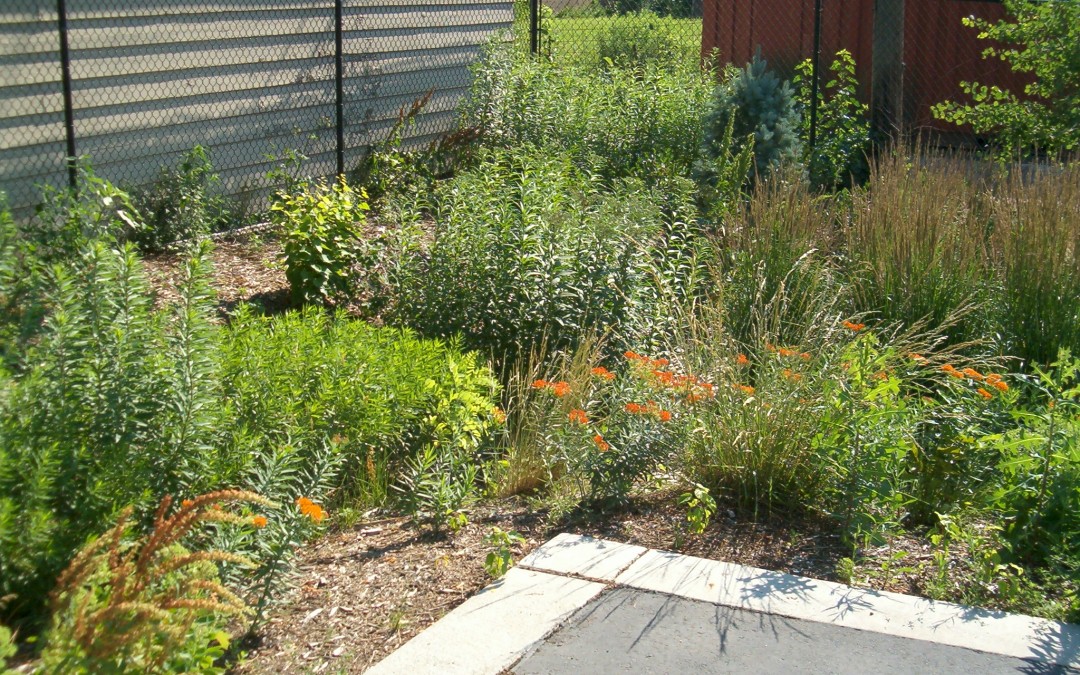Green infrastructure is a tool for managing rainfall. So what if there isn’t any?
California’s drought has been in the news for months. Now Western Canada is getting hit (read more about droughts in B.C., Alberta, and Saskatchewan). Agriculture is suffering, wildfires blaze, and residents are restricting their water use.
It might seem counterintuitive to focus on rain when the lack of rain is the problem. But in areas threatened by drought, it is even more important to treat rain as a resource instead of a waste product. By soaking rain into the ground where it can recharge aquifers, or harvesting it for reuse, cities and agriculture can become more resilient to drought.
Infiltration landscapes recreate the natural environment in urbanized areas. Native plants used in bioretention practices tolerate both extreme rainfall and drought. Higher quality topsoil absorbs and holds much more rainwater, reducing watering needs in the dry season. This applies to agriculture as well – farming methods that maintain good soil health can help fields absorb eight times more water than traditional practices. And soaking water into the ground helps aquifers maintain their levels, so more groundwater is available to be used during times of surface water shortage.
There are some great examples. Tucson, Arizona is in a desert. Rains come in monsoons, inundating streets, then quickly disappearing. Green infrastructure captures the downpour, reduces flooding, and waters native plants, which beautify the streetscapes. Green infrastructure also allows more rainwater to recharge the groundwater aquifers, the source of the city’s drinking water.
California is realizing the need for a new approach. See Elmer Avenue in Los Angeles, a large-scale neighbourhood retrofit which transformed a flood-prone area into a flood-resistant groundwater recharge area.
British Columbia, famous for rain, is also managing rain where it falls to maintain groundwater levels and deal with drought as well as flooding. This summer drought is affecting nearly the entire province. Reservoirs are getting low due to a combination of low rainfall and reduced meltwater from the mountain snowpack.
In the Capital Regional District of Victoria, innovative rainwater management techniques are showcased throughout the region. The Partnership for Water Sustainability works with the BC government and local governments to implement green infrastructure across the province, using the water balance model as a tool to help local decision makers. The University of British Columbia has produced a video series highlighting green infrastructure projects at the property, neighbourhood, and community scale in BC.
Alberta as well is making strides in transforming the urban landscape. Learn more at the Alberta Low Impact Development Partnership website.
Climate change makes extremes more extreme, whether in flooding or drought (and sometimes both in the same area). More and more regions are adapting by turning to green infrastructure instead of relying solely on conventional hard engineering solutions.


